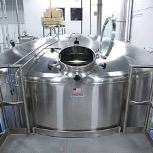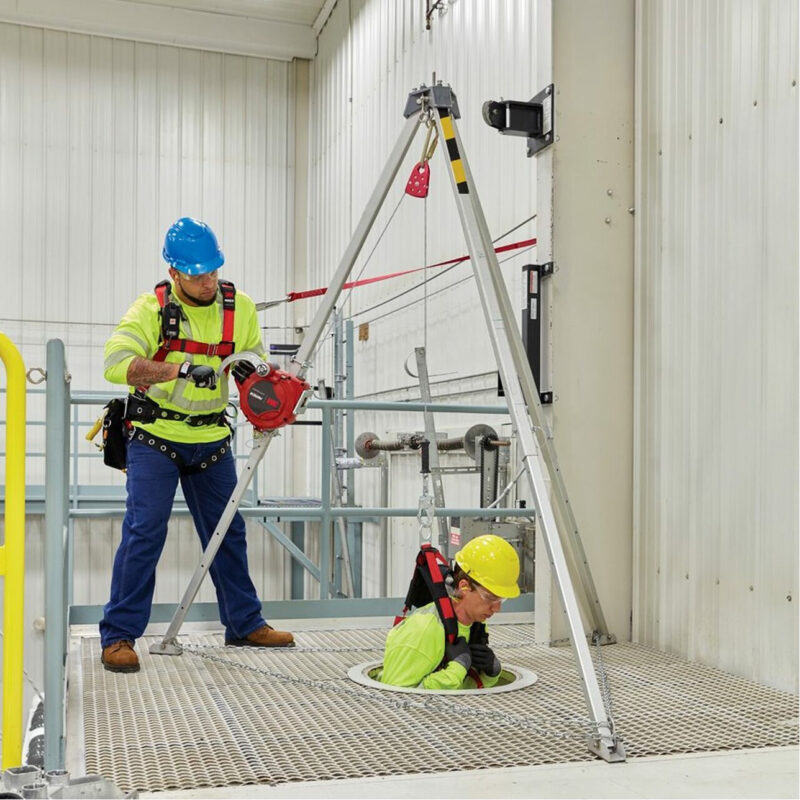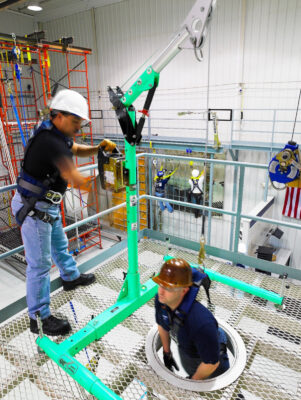Confined Space, Work at Heights
Confined Space and Selecting the Correct Equipment for Entry
HISTORIC SELECTION
The general selection to equipment when it comes to entry gear has been a Tripod, as can be seen in the example above. This is assuming the people actually use gear.
The tripod is great as it creates height for an anchor point where the user is able to create a system to lift and lower the entrant into a confined space. This is why it has been around for such a long time. As great of an option this is, it does have limitations.
Tripod Limitations
For a tripod to be used, the area it is being used in needs to be perfect for access. A perfect area requires the following:
1 – FLAT SURFACE – It MUST have a flat surface where all 3 points of the tripod touch the ground (NOTE: There are ways to adjust the tripod for less even surfaces, but this is a technical exercise and as soon as the tripod is loaded on an uneven surface). This means a tripod is probably not going to be a great option as a general access solution unless you are going into the ground or an area with a decent amount of surface area around the entry hole.
2 – CENTER OF TRIPOD OVER HOLE – Once you have ensured the surface is flat you would need to ensure the highest point of the tripod (where we would anchor) MUT be above the entry hole. The means the if a hole only has a decent structure on one side of the hole, a tripod will not work.
 You can already begin seeing how difficult ticking the above 2 boxes would be for this sort of Access Requirement.
You can already begin seeing how difficult ticking the above 2 boxes would be for this sort of Access Requirement.
3 – ERGONOMICS – Getting the piece of equipment to the place it will be used is a big consideration seeing that the entrance could be on the top of a 20m tower with a cat ladder for access or possibly 3 stories up in the building. As a tripod is generally more than 30kg’s, without equipment like winches, the system needs to be ergonomically friendly, or it becomes a deterrent to using it.
‘’IMAGINE TRYING TO GET A TRIPOD TO SAFELY PERMIT ACCESS IN THE BELOW EXAMPLE – Considering we want the load to be directly under the middle of the Tripod to ensure it does not shift the load’’
What is the Alternative Solution?
The more recent solution when accessing a confined space is the Davit System. The solution is by no means a complete replacement, as a tripod has its place, but let’s look at how this solution approaches the limitations found in tripods.
1 – FLAT SURFACE: A Davit System has either 1 or 4 points of contact. The 1 is when there is a certified anchor point installed (Just a bonus to what the system offers) where the 4 points is more the direct equivalent to the tripod. What the Davit system upgrades is that each of those 4 legs can be adjusted individually (about 150mm) to ensure the spirit level is centred when not on a flat surface. The single point is obviously installed flat, so this won’t require adjustments.
2 – CENTER OF TRIPOD OVER HOLE: As a Davit system comes in different adjustable lengths and widths it is able to get the head of the Anchor point directly over the hole. The arms allow up to about 1.2m reach from where the Base is, or the Anchor point is installed.
3 – ERGONOMICS: The Davit system is by no means lighter than a Tripod but where it does create a great solution is that the system is designed by connecting parts together. A complete Davit system (Called a 5 Piece Davit System) is built by connecting 5 components together. Even with the system weighing anywhere from 45kg – 60kg, you will find the components weighing up to around a maximum of 15kg which ensures the user can easily move the system in those components and then rapidly assemble it once in the correct area.
4 – BONUS 1 – RESCUE SUPPORT: A substantial bonus which comes with working with the Davit system from a rescue perspective is the capability to turn the head 180° – This means if I have a casualty who must be lifted through the entrance/exit hole you will be able to move them 90° to the left or right when retrieving them. Moving an unconscious person with that ease is great by itself but the massive value is you are not allowing other persons to find themselves in a fall risk to the open hole when trying to get to the casualty hanging in the centre of the hole.
5 – BONUS 2 – INTERCHANGEABLE PARTS: The system can be comprised of many different sizes and lengths, but the entire system works hand in hand with most of the components. This means if I have 2 systems of different sizes, as demonstrated below, you would be able to build them in many different configurations, depending on the need of the area being worked in.
6 – BONUS 3 – ANCHOR COMPATIBILITY: The last point we will cover was touched on earlier. The general system is comprised of 5 pieces, but that is not the way you HAVE TO use the system. There are alternative methods which can be used, generally determined by site layout. The options vary from Wall Mounted Brackets to Floor Mounted Brackets and from Trailer Mounted Hitches to Counterweighted systems.
Closing – NOT JUST ENTRY CONSIDERATION:
The above gives an overview of different ways to approach Confined Space entry, and entry is generally not the issue. There are many people we have dealt with who have been happy with dropping a ladder into the entry hole – which isn’t necessarily a bad option for gaining access into the confined space. It becomes a horrible option when there is a sudden need to rescue the person in the Confined Space.
60% of fatalities in confined spaces are RESCUERS
The goal for every Confined Space entry should be to have a way to perform a rescue of the entrants without any person needing to access the Confined Space. This way we ensure that should a person succumb to gases, which are probably not visible, and a rescue person who has to act quickly may not have the correct Self-Contained Breathing Apparatus (SCBA) to allow them to safely enter the environment there is no need to risk another life. If the entrant were connected to a backup winch which could immediately retrieve the unconscious person there is a higher likelihood that the casualty would be safe due to a rapid rescue as well as a 0% chance of additional fatalities of those who intend to perform a rescue.




I am a Safety Officer Tarnue Yango is my name.
Working with Project Management International/Liberia, West Africa.